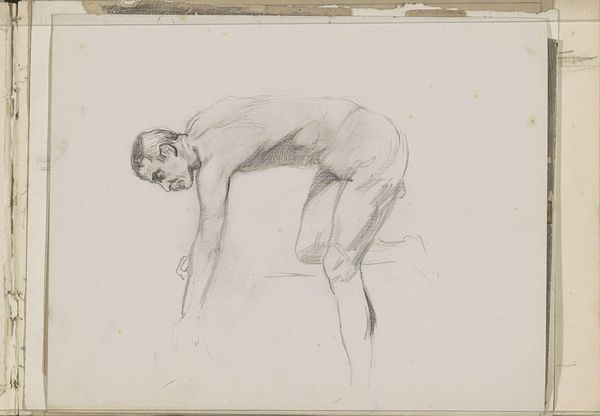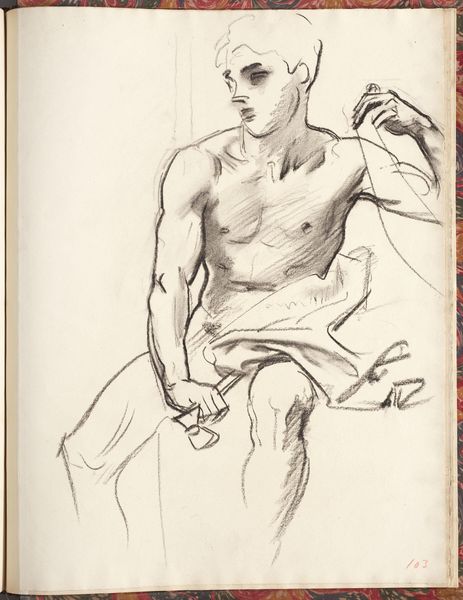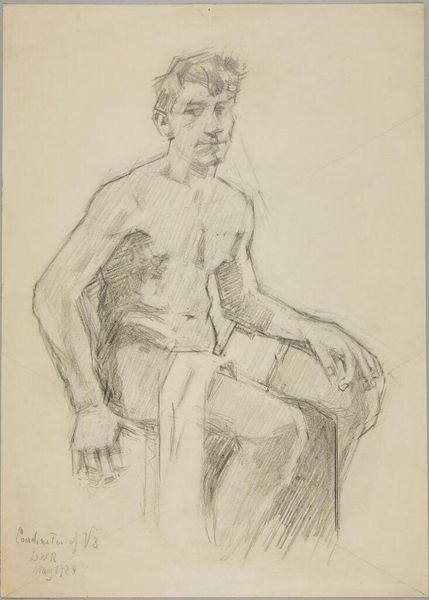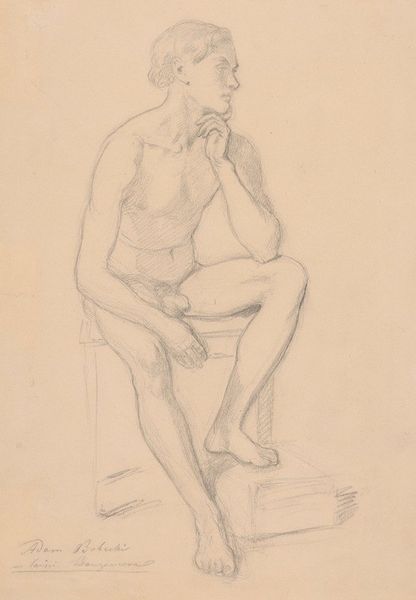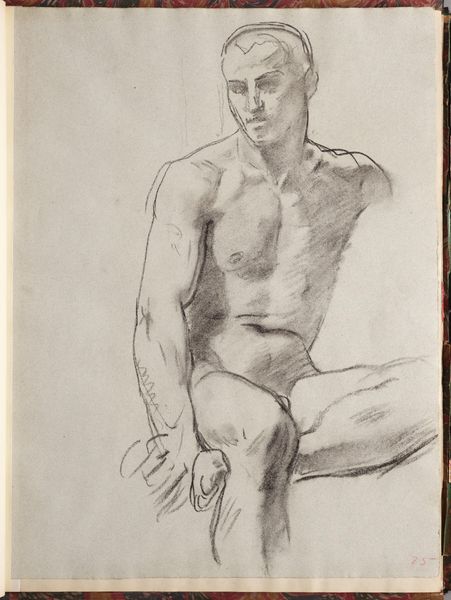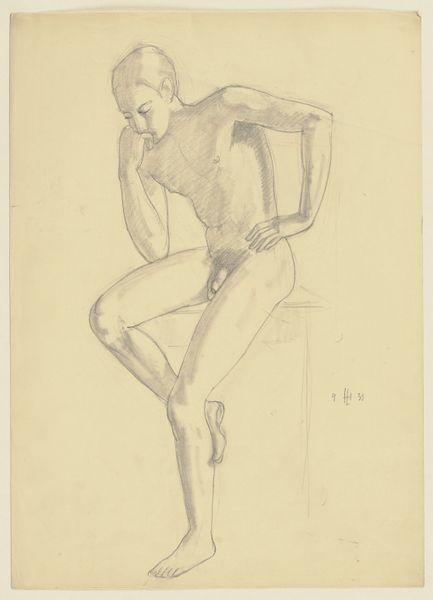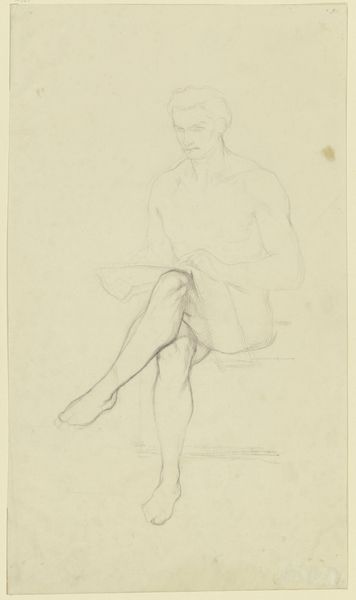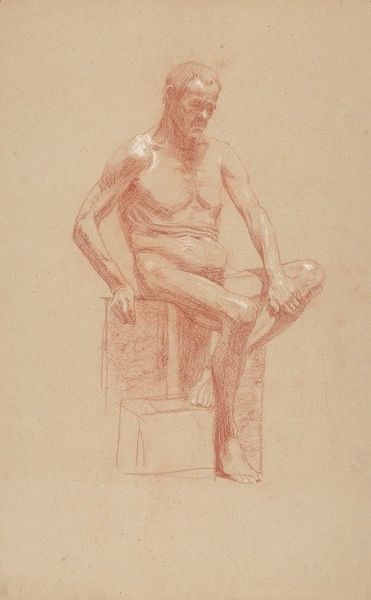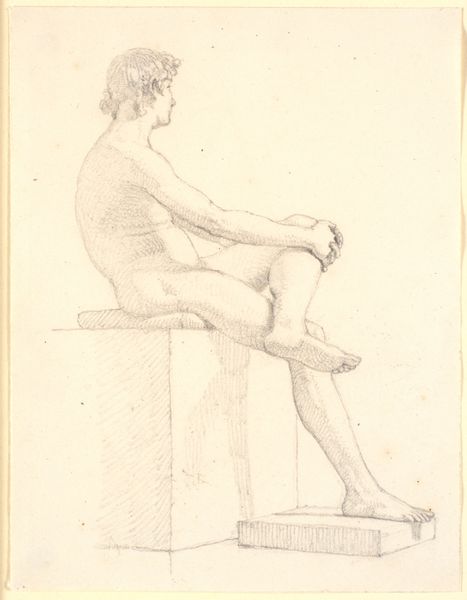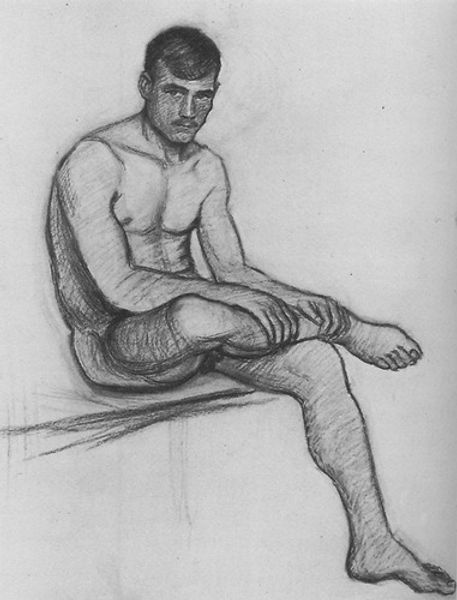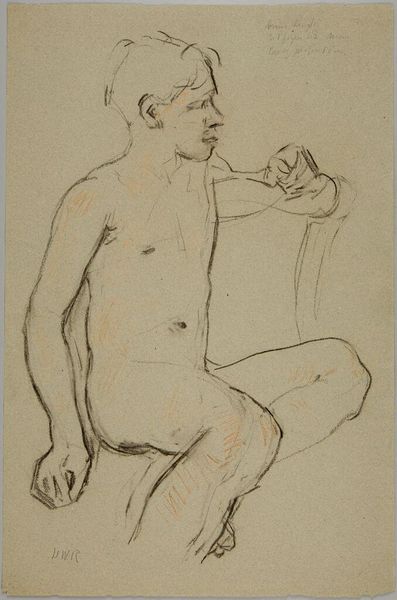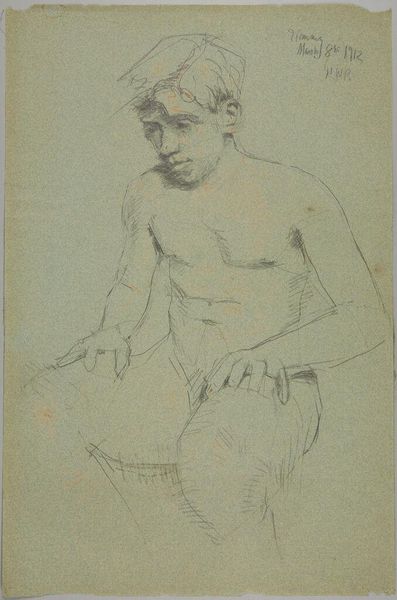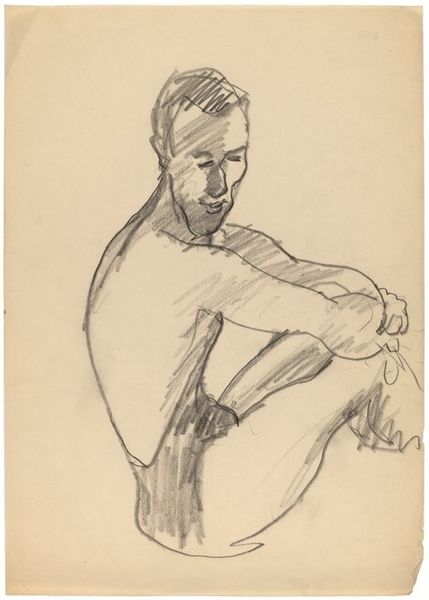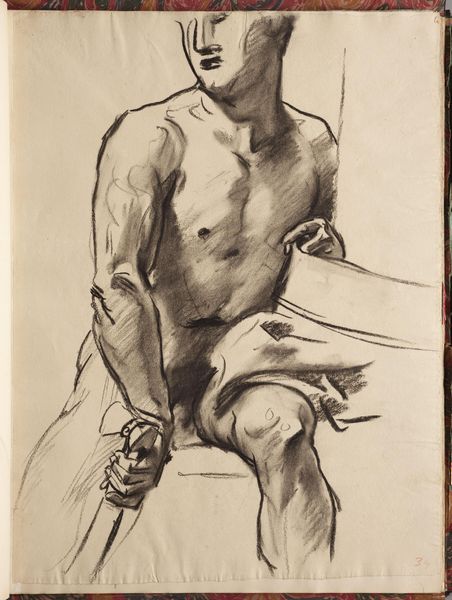
drawing, pencil
#
portrait
#
drawing
#
amateur sketch
#
light pencil work
#
pencil sketch
#
incomplete sketchy
#
figuration
#
personal sketchbook
#
idea generation sketch
#
detailed observational sketch
#
pencil
#
sketchbook drawing
#
portrait drawing
#
pencil work
#
academic-art
Copyright: Rijks Museum: Open Domain
Editor: This is "Zittende naakte man," or "Seated Nude Man," a pencil drawing from sometime between 1865 and 1913, located at the Rijksmuseum. It feels very immediate, like a study. What historical conversations do you think it opens up? Curator: I see it as participating in a dialogue about the male gaze and academic art. This drawing needs to be situated within the artistic and societal power structures of its time. Consider the artist, likely male, observing and depicting a nude male subject. How does this impact our understanding of masculinity and the act of looking? Does the sketch feel like an objective study or a projection of desire? Editor: That's interesting! I hadn’t considered the power dynamics so explicitly. Is it unusual to see the male nude depicted by a male artist at the time? Curator: The male nude has a long, complex history, often linked to ideals of beauty and strength, particularly in academic art. But how did the institutional approval of depicting men reflect or dictate ideals around male dominance and homosocial relationships in 19th-century society? Where does this casual sketch challenge academic authority by being unfinished, seemingly intimate? Editor: So, even in something that appears like a simple figure study, we can unpack broader issues of gender, power, and artistic intention. Does this shift how we view this drawing now? Curator: Absolutely. By looking through the lens of critical theory, this seemingly straightforward drawing becomes a site of inquiry. It asks us to confront the legacy of the male gaze, question institutional power dynamics, and explore the complexities of identity as depicted and defined within art history. What did *you* learn? Editor: It reminds me that art isn’t created in a vacuum; everything reflects the cultural context, intended or not! Thanks, that gave me a lot to think about.
Comments
No comments
Be the first to comment and join the conversation on the ultimate creative platform.
